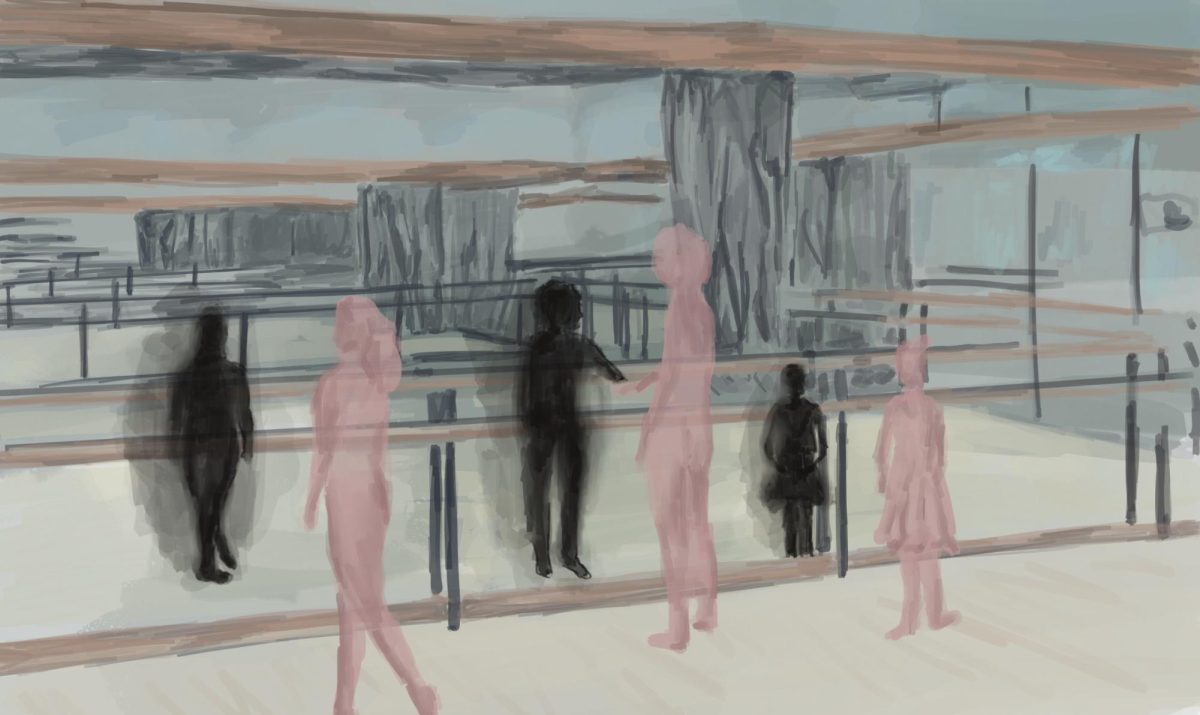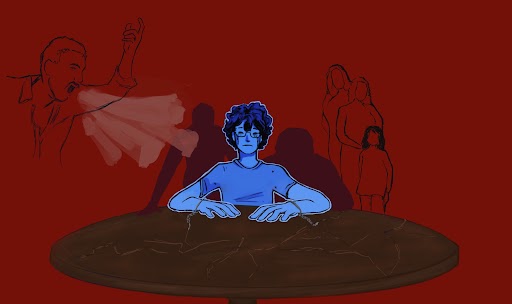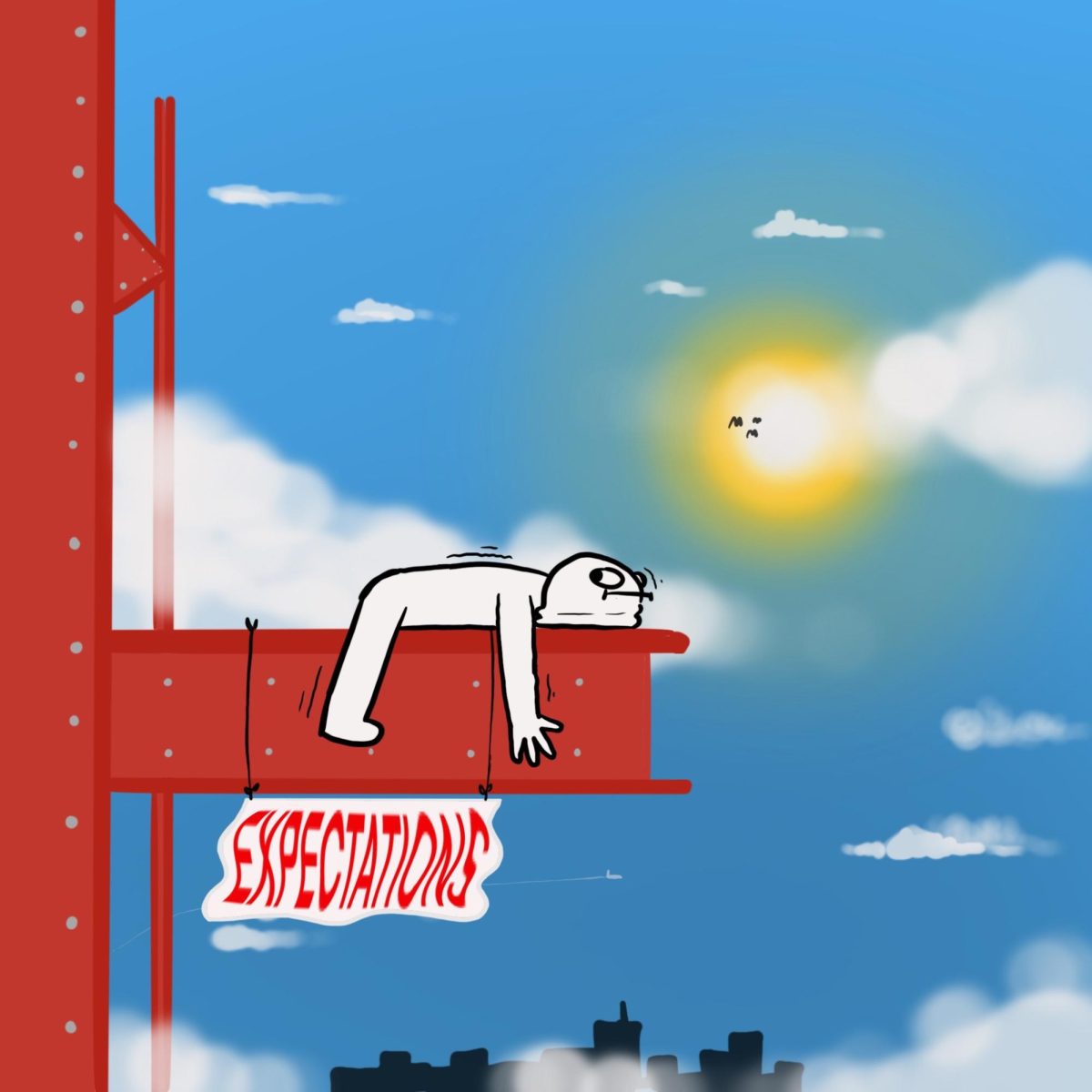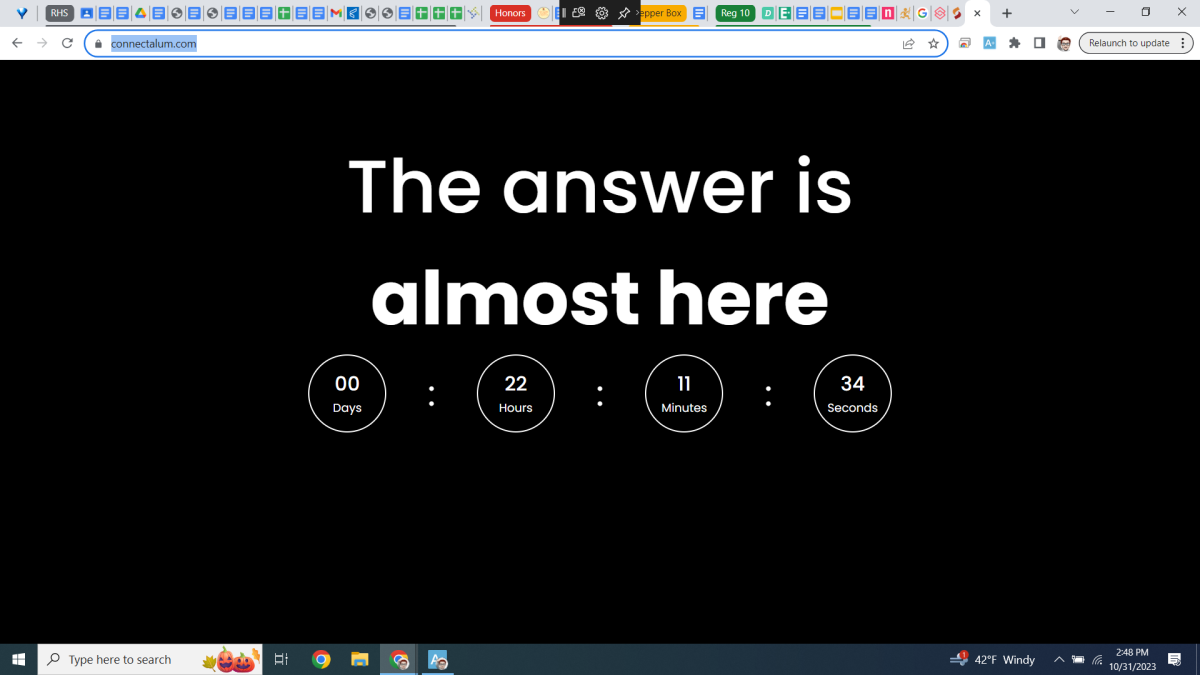Body image is an inherent part of the dance industry, and even though the traditional standards are being called out for being problematic, they still produce negative effects on young dancers.
The traditional dancer’s body type has always been very slim with long limbs to create long lines. Dancers end up trying to reach this perfect physique in unhealthy ways, and viewing their own natural body as inferior to others.
It’s no stretch to say that social media has a huge effect on body image. For dancers who already have a magnifying glass on their appearance, the images they see on Instagram can amplify already present issues.
Junior Maggie Bannester has been involved in dance programs since she was seven years old, and continues to perform today as a baton twirler at Ritenour.
“Especially now with social media, all you see in TikTok are very skinny girls doing these cool turns or leaps, never the thick or bigger girls. I feel like it’s an unspoken pressure to keep your weight down so you can look like everyone else and not have the only large costume out of adult smalls and extra smalls,” Bannester said.
The Origin of the Dancer’s Body
While the standard historically has been for dancers to be very slim with long legs, specific dance companies have different views on the perfect dancer’s body.
Corps de ballet members need to be very similar in height and shape, as with the traditional classical ballets, a company will have the corps appearing to be the same. Whereas the Radio City Rockettes all must be within the 5’5 and 5’10 ½ range. In the earlier years, the Rockettes would only hire white dancers because they believed it helped increase their uniformity.
There is even a specific body type for dancers known as the Balanchine Body. George Balanchine, founder of the School of American Ballet, describes the perfect ballerina as very lean with long legs and arms, small hips, a short torso, a small ribcage, and a long neck.
“I feel like being ‘skinny’ has been the image for a dancer forever,“ Bannester said.
For dancers, it feels as though they are living under a spotlight. Dancers always have people looking at their bodies and the way they move in comparison to other dancers.
“In the dance world, there’s always someone critiquing something about you. Everyone has their opinion on what a dancer’s body and appearance should look like,” senior Ritenour dance team member Makaria Travis said.
Dance Nutrition states that more than 75% of dancers feel pressure to lose weight with stress often from looking in the mirror for extended periods of time, tight-fitting uniforms, beliefs that lower body weights offer a performance advantage, and casting, which is believing that lower body weight might correlate with a better role.
The Dancer’s Body Begins to Change
Throughout the years the ideal dancer’s body has stayed almost entirely the same. However, since the pandemic, eating disorders started showing up in higher cases, and those within the dance industry have been spotlighted much more. Human Kinetics explained that more than 20 percent of dancers have an eating disorder as of Nov 2022.
Professional counselor Maura Colombo specializes in counseling for dancers. She had dance experience growing up and dealt with the body issues that came from dance, which led to her career choice.
“I think this has changed in a few areas. The first is that we know there has been a drastic increase in eating disorders during the pandemic. I think in terms of the isolation and constant changes it was a really hard time for people and a lot of us didn’t know how to cope, so many people turned to food,” Colombo said.
New legislature has come into existence to address some of the trauma that employers have inadvertently put onto professions like dancing. On November 22, New York passed the New York City Human Rights Law (NYCHRL), which made it illegal for employers to discriminate based on height and/or weight in hiring decisions. This will directly affect the Rockettes’ hiring process, as they can no longer keep their traditional height and weight requirements.
“The second thing is that I do see more conversations about different bodies in dance that we don’t have to all be one size or one look. It doesn’t mean bias isn’t there, but I do see some improvement in recent years in terms of awareness and conversation,” Colombo said.
Influences of Modern Technology on Dancers
With so many apps and filters available to the community, it is incredibly simple to curate the perfect picture. Creators can make legs look longer and leaner, soften and blur edges, and use artful shadows to create contour. What everyone, especially dancers, ends up comparing themselves to is an inaccurate view of reality.
Dance instructor and co-studio head of Dance Factory Laura Atkins, has seen how much social media influencers have affected her dancers and says it is much different than when she danced.
“I think it’s even harder now than it ever has been to be a dancer. Between Instagram and TikTok, you see these amazing dancers, costumes, stage appearances, and so much more. It’s constantly in your face. Whereas before, the only comparison you had was at competitions or within your own studio,” Atkins said.
Body positivity always comes and goes in waves. With the free-flowing nature of social media, there are both times when it becomes popular to advocate for different types of dancer’s bodies, as well as times when the historical body type is highlighted and celebrated.
“The media I feel like had a fad of dancer body positivity while I danced,” Bannester said.
Dancers are encouraged to conform to certain standards, sometimes unhealthily.
A study done by The Feed Blog shows that dancers are at three times greater risk of having an eating disorder than non-dancers and have higher rates of body dissatisfaction, dieting, and dependence on exercise than non-dancers, or other athletes.
“When the fad was going on, the media started bringing up how small some dancers were and the issues like eating disorders that are behind the scenes of your favorite dance companies or teams,” said Bannester.
The Trauma of Being Judged By Size
“There have been plenty of times that I didn’t make the cut because of my weight or appearance, just for the sheer fact that there was someone who looked better in the uniform than I do,” Atkins said.“It’s a very diminishing feeling when you know you have the talent to do exactly what they are asking for, but don’t fit the mold.”
Getting introduced to this idea of needing to be a perfect shape or size can damage the self-confidence that a person has for their own body.
“I found it harder for me to want to perform in my costumes because I felt exposed in a body I didn’t love,” Bannester said.
Being so hyperaware of their bodies and the way they look in comparison to other dancers makes it nearly impossible to let go and feel free in the movement.
“The costume was flattering on about ⅔ of us. We wore jeans, a sports bra, and a see-through cropped top over it. I was uncomfortable in the costume. I felt like my body was on display,” Atkins said. “I felt like every move I made brought attention to every lump, roll, and curve on my body. It completely hindered my ability to perform to my fullest ability because I was focused on how I looked more than how I performed.”
Many dancers’ ideas of the perfect body are permanently altered from their time in the studio.
“I think growing up I didn’t realize how dance shaped my view of how people ‘should’ look. I never thought of myself as particularly thin, just average. Now looking back I understand that not only was I dangerously thin but I was fighting for my life with an eating disorder that no one around me seemed concerned about,” Colombo said.
Many dancers describe how it feels to be overly conscious of their body and the way it moves in comparison to the rest of the ensemble.
“During performances, I couldn’t feel the music or passion as much because I was in my head and felt insecure. I was scared to show and express myself,” Travis said.
After dancing for years, often these struggles revolving around body image are never-ending. It will affect these dancers’ self-image for the rest of their lives.
“I feel like now I’m always looking in the mirror, thinking about my body and how it used to look when I was dancing. I wish I would’ve appreciated it more back then,” Travis said.
Through these experiences, the battle with body image may hurt their love or passion for the art of dance.
“I personally worked through a battle with an eating disorder with the help of therapy and medical doctors as well as inpatient eating disorder treatment. I had to step away from dance for a few years and really heal my relationship with my body before I could return,” Colombo said.
The Future of the Dance Body
Adults in the dance community today are trying to evolve and make the art as accessible for the new generation of dancers as possible.
“I think that it’s really hard for someone to understand exactly what it takes physically and mentally to be a dancer unless they have been there themself,” Colombo said. “I wanted to give dancers what I wish I had and what I think I needed. Dance is still a part of my soul and so as I was pursuing my master’s and then working in the field of mental health I quickly realized the need within both fields.”
Learning from their past experiences has helped these instructors to grow and their environment to be comforting for their students.
“I really try to be as inclusive as possible. I never want to put anyone in a costume where they aren’t comfortable. And I will always encourage people to try something new,” Atkins said.
Since dance is such a unique experience, younger dancers seek out adults who experienced these same struggles when they were younger.
“Dance was always something I loved and still is. I knew that I needed to have a healthy perspective to come back into the field of dance. I think having struggled myself and ultimately finding healing also helps me to have an appreciation as well as compassion for others who are struggling on their own journeys,” Colombo said.










